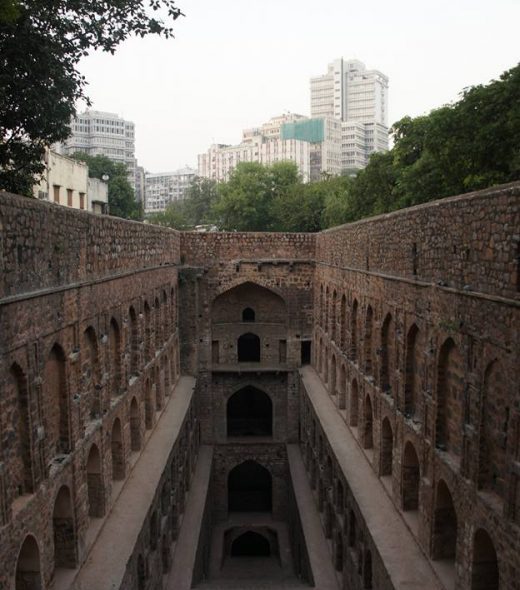First things first, I am fully aware that an entrance to the underworld does not lie at the end of every dark path. But when hundreds of intricate steps lead to an abyss in the heart of Delhi, and you face constant barriers to get to the bottom, the mind can’t help but wander.
A baoli is a well. Back when freely running water was not so readily available, a baoli was built to pool the precious liquid from any source. As with most ancient architectural feats, beauty meets practicality. The result is an intricate stepped chamber that leads underground. Naturally, we wanted to explore.
Agrasen ki Baoli can be found fairly easily. It is central in Delhi, just south of Connault Place. Around some backstreets and past some stunning street art there is a small doorway. It is at the end of a vast wall and up a few steps. The extent of the structure beyond is extraordinary.
The first thing that got me was how high up we suddenly were. I have no idea how many steps were before us. There seemed to be levels as they led the way down. This would be, presumably, how the water could be accessed at varying depths.
Behind us, hidden under some trees was a long forgotten mosque. Opposite the triple arches that I have come to associate with ancient places of worship, sat a security guard. As is the case with most of these men dressed in blue at tourist sites, he didn’t seem too concerned about the droves of visitors. Now was the time to engage our inner Indiana Jones/ Lara Croft.
Well wishes
We walked along one of the platforms that lined the baoli. There were alcoves and a barred space ahead. The further into the well we went, the more we realised quite how high up we were. Bats chattered in the dark chambers ahead. Below, other visitors ventured down the steps and into what lay beyond. In my mind I made an itinerary. We will walk to the end of the platform, peer beyond the bars and figure out the engineering and marvel at the architecture. Then we would go to the bottom of the steps. Who knows what we would find in the darkness there.
A couple more meters along the platform and a piercing whistle echoed around the space. It was quite a sound, as though the Indian equivalent of a banshee had been disturbed. We turned around and saw the unenthusiastic security guard. He blew on his whistle like he was on some kind of commission. He frantically waved his hand at anyone who would look at him. Sheepishly we walked back – perhaps we weren’t allowed on the platform after all. But the guard was keen to stop the visitors who were venturing further into the baoli.
Despite his calls we followed other visitors down the steps. We had to see what was at the bottom, hidden in the darkness. Was it a further labyrinth of architectural wonder or simply a dark pit? The guard stopped us before we could really tell. He had something to hide and we weren’t allowed to find out what it was. We were asked to leave. Perhaps twenty-to-six is a normal closing time.
And so the baoli is left to our imagination. The vast steps, ledges and alcoves, in all its manmade grandeur can only hide a grand secret. Perhaps there is an entrance to Patala hidden in Delhi after all.

